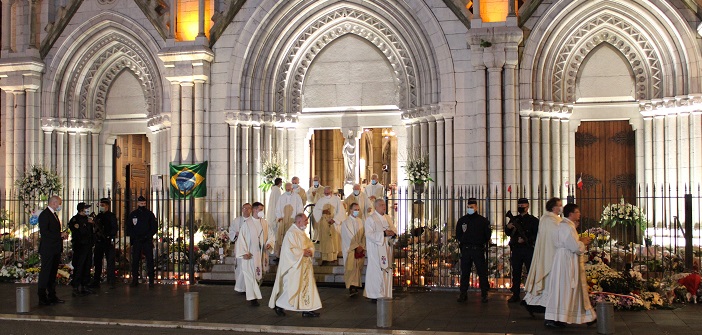An audience of around 300 people gathered in front of the security perimeter of the Notre-Dame church. “Local parishioners specifically invited to this celebration,” the diocese of Nice stated.
Dozens of police officers, CRS, and military personnel were positioned around the religious building and throughout the neighborhood to ensure security during the mass. The tribute lasted a little over an hour and a half in the presence of several bishops and representatives of different religions, seemingly to show a sacred unity in this new challenge faced by the Catholic Church.
The mass was celebrated by Bishop André Marceau, the bishop of Nice. It was preceded by a penitential rite of reparation, to restore the desecrated church to worship.
Bishop André Marceau, the bishop of Nice, explains what a “mass of reparation” is: “The message of death, violence, barbarity, what denies humans, human relationships: this offends God. The time of prayer will indeed be a time of reparation to reaffirm the vocation of this building. And, by sprinkling the walls with water like a baptism, it is to say that its vocation is to testify to a God who comes to encounter humans.”
“We must be able to give the signal to others that we remain standing! Our freedom of expression is precisely our freedom to open our churches where we proclaim that our faith is a message of love,” insisted the bishop of Nice, Bishop André Marceau, in an interview on Saturday with Nice-Matin.
While calling on Muslims to “take measures” against extremism, he asserted that he is not “Charlie,” in reference to the satirical weekly that published caricatures of Muhammad. Other bishops in France have questioned the use of these drawings and the limits of freedom of expression.
Outside the impressive security perimeter, hundreds of practitioners sang various religious songs for about ten minutes.


